Modified Model for Shallow Soil Strength Recovery Calculation during Set-Up Periods of Jetted Conductor—A Case Study of Equatorial Guinea Bay Deep-Water Drilling
Abstract
:1. Introduction
2. Shear Strength Profile of the Shallow Soil in Equatorial Guinea Deep-Water
- L—the depth below the mudline, ft;
- Su-avg—the average shear strength at depth of L, ksf.
- —the recommended shear strength at depth of L, ksf.
3. Soil Strength Recovery Model of Equatorial Guinea
- : Soil strength recovery factor (correlated with set-up time);
- : Conductor capacity at time = t days, pounds (lbs);
- : Initial Capacity, (at time t = 0.01 days), pounds (lbs);
- : Load increment beyond 0.01 day, pounds (lbs);
- : Average undrained shear strength of soil along the length of riser pipe, pounds-force per square inch;
4. Conductor Setting Depth Determination
4.1. Wellhead Landed Load Calculation
- , maximum load landed on wellhead during technical casing cementing, lbs;
- , the weight of 20″ casing in air, lbs;
- , the weight of cementing string in air, pound, lbs;
- , the weight of sea water in the annular, lbs;
- , the weight of cement in the cementing string, lbs;
- , the weight of water displaced by 20″ casing
4.2. Jetting Conductor Depth Design According to Different Set-Up Time
5. Conclusions
Author Contributions
Funding
Institutional Review Board Statement
Informed Consent Statement
Data Availability Statement
Conflicts of Interest
References
- Xu, G.; Liu, S.; Xie, R.; Tong, G.; Li, C. The development of a new type of deep-water surface conductor joint. In Proceedings of the 29th International Ocean and Polar Engineering Conference, Honolulu, HI, USA, 16–21 June 2019; Volume 2, pp. 1754–1755. [Google Scholar]
- Wang, L.; Gao, B.; Hu, T.; Ma, C.; Wang, J. Mechanical analysis of subsea wellhead in deep-water wells. In Proceedings of the 29th International Ocean and Polar Engineering Conference, Honolulu, HI, USA, 16–21 June 2019; Volume 1, pp. 1464–1470. [Google Scholar]
- Beck, R.D.; Jackson, C.W.; Hamilton, T.K. Reliable deep-water structural casing installation using control jetting. In Proceedings of the SPE Annual Technical Conference and Exhibition, Dallas, TX, USA, 6–9 October 1991; pp. 75–84. [Google Scholar] [CrossRef]
- Jeanjean, P. Innovative Design Method for Deep-water Surface Casings. In Proceedings of the SPE Annual Technical Conference and Exhibition, San Antonio, TX, USA, 29 September–2 October 2002; pp. 241–254. [Google Scholar] [CrossRef]
- Akers, T.J. Improving hole quality and casing-running performance in riserless Topholes—Deep-water Angola. SPE/IADC Drill. Conf. Proc. 2008, 2, 684–699. [Google Scholar] [CrossRef]
- Yang, J.; Yan, D.; Tian, R.; Zhou, B.; Liu, S.; Zhou, J.; Tang, H. Bit stick-out calculation for the deep-water conductor jetting technique. Pet. Explor. Dev. 2013, 40, 394–397. [Google Scholar] [CrossRef]
- Akers, T.J. Jetting of structural casing in deep-water environments: Job design and operational practices. SPE Drill. Complet. 2008, 23, 29–40. [Google Scholar] [CrossRef]
- Wang, T.; Song, B. Study on deep-water conductor jet excavation mechanism in cohesive soil. Appl. Ocean Res. 2019, 82, 225–235. [Google Scholar] [CrossRef]
- Hui, Z.; Deli, G.; Haixiong, T. Landing string design and strength check in ultra-deep-water condition. J. Nat. Gas Sci. Eng. 2010, 2, 178–182. [Google Scholar] [CrossRef]
- Deng, S.; Liu, Y.; Jiang, P.; Zhu, S.; Tao, L.; He, Y. Simulation and experimental study of deep-water subsea wellhead-shallow casing deflection considering system mass force. Ocean Eng. 2019, 187, 106222. [Google Scholar] [CrossRef]
- Kan, C.; Yang, J.; Yu, X.; Dong, T.; Wu, X.; Liu, M.; Li, C.; Zhang, C.; Fu, J. Load bearing characteristics study on novel deep-water composite drilling conductor by simulation and experimental methods. J. Pet. Sci. Eng. 2018, 171, 289–301. [Google Scholar] [CrossRef]
- Zhou, B.; Yang, J.; Liu, Z.; Luo, J.; Ye, J.; Chen, B.; Liu, S.; Zhou, J. Design of conductor soaking time in deep-water drilling. Pet. Explor. Dev. 2014, 41, 257–261. [Google Scholar] [CrossRef]
- Wang, B.; van Rhee, C.; Nobel, A.; Keetels, G. Modeling the hydraulic excavation of cohesive soil by a moving vertical jet. Ocean Eng. 2021, 227, 108796. [Google Scholar] [CrossRef]
- Su, K.; Guan, Z.; Su, Y. Determination method of conductor setting depth using jetting drilling in deep-water. J. China Univ. Pet. Ed. Nat. Sci. 2008, 4, 47–50. [Google Scholar]
- Yan, W.; Chen, Z.J.; Deng, J.G.; Zhu, H.Y.; Deng, F.C.; Liu, Z.L. Numerical method for subsea wellhead stability analysis in deep-water drilling. Ocean Eng. 2015, 98, 50–56. [Google Scholar] [CrossRef]
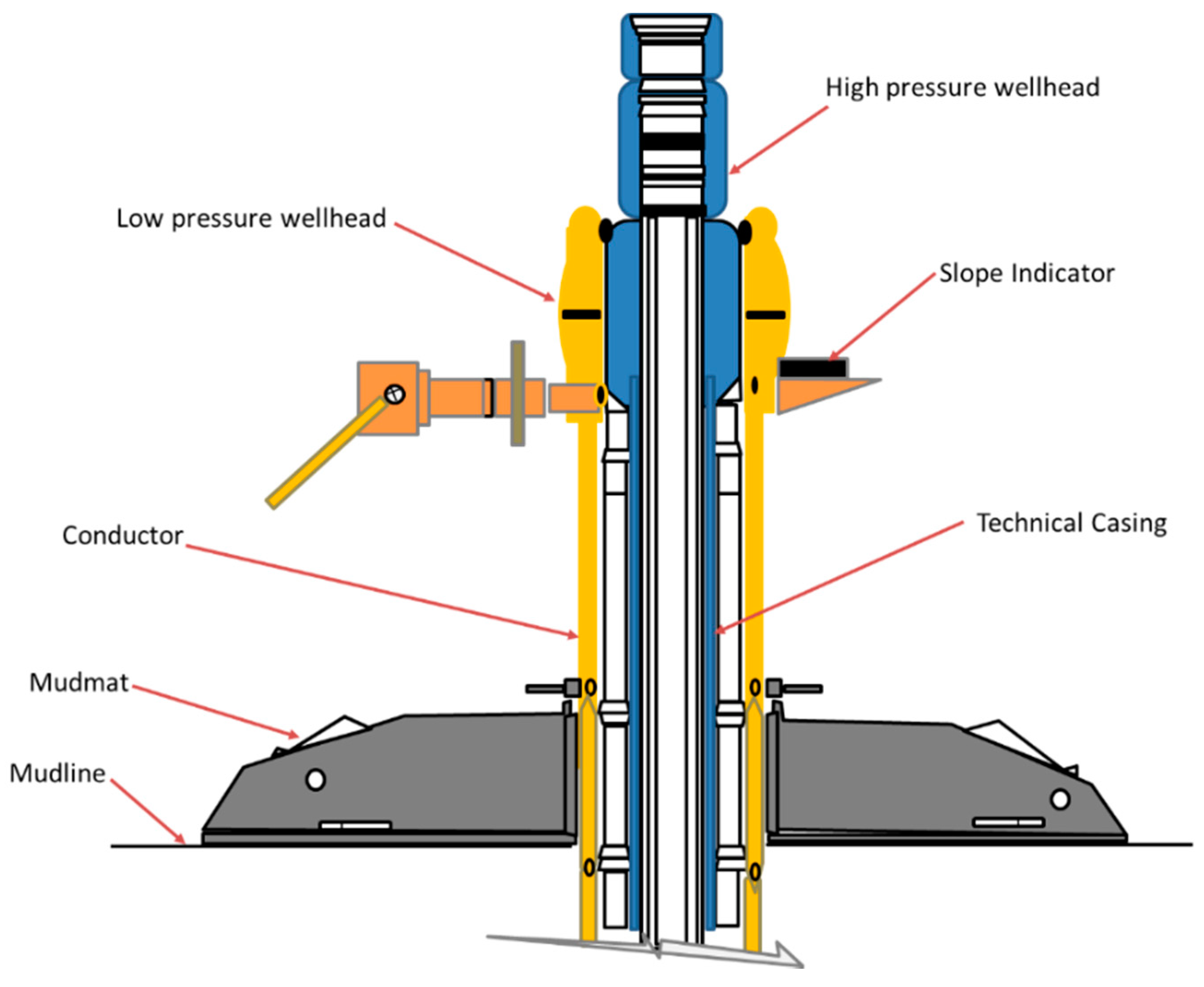
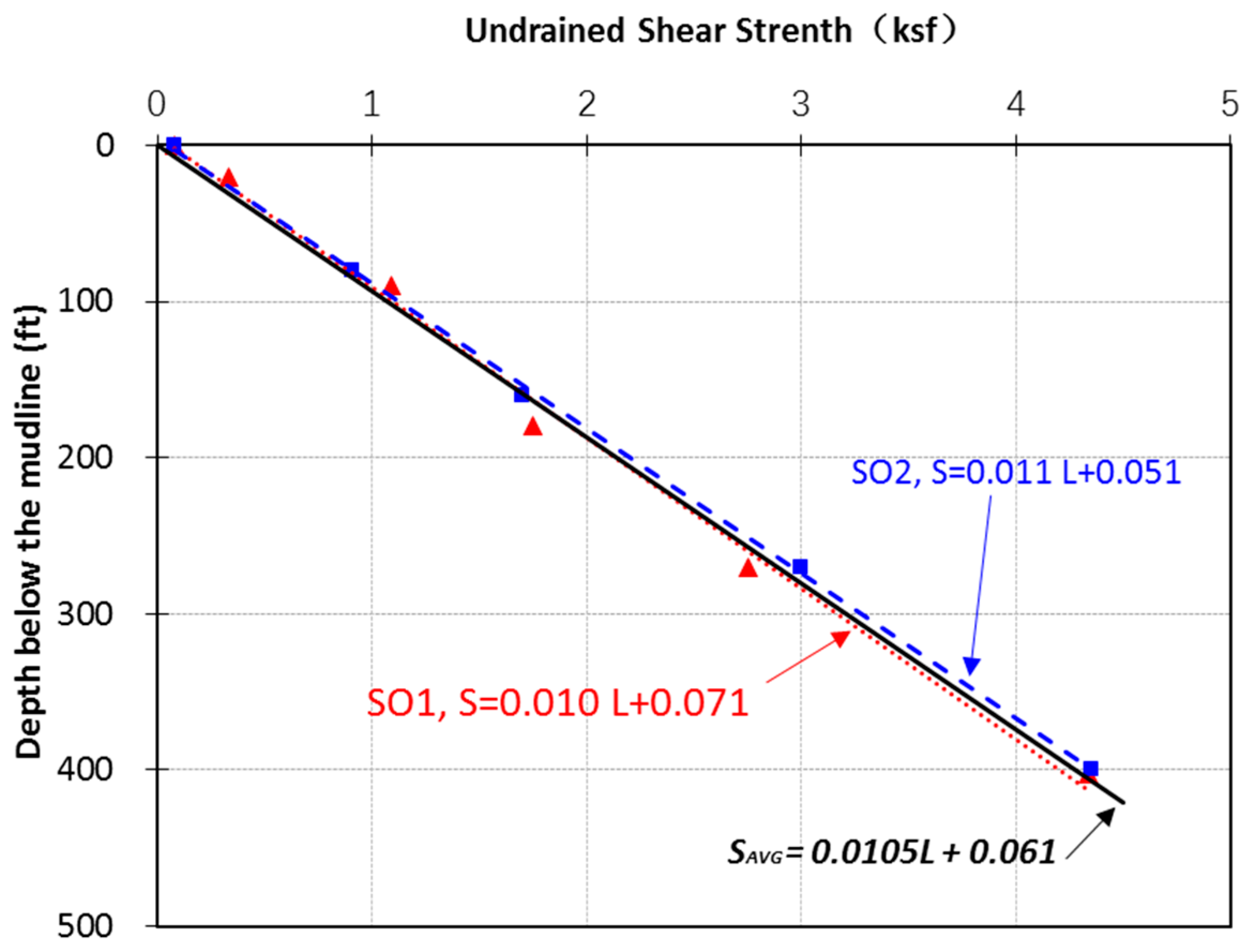

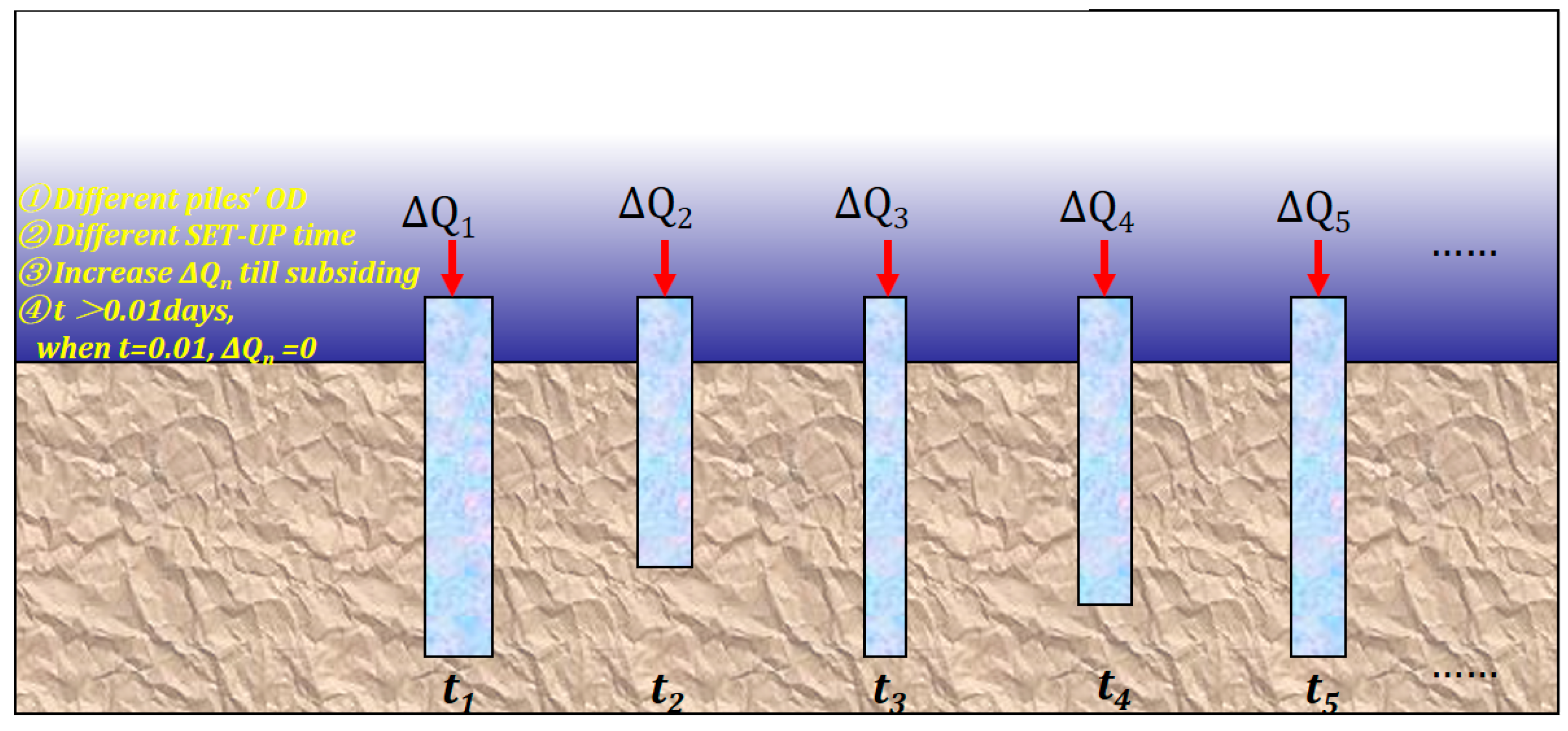
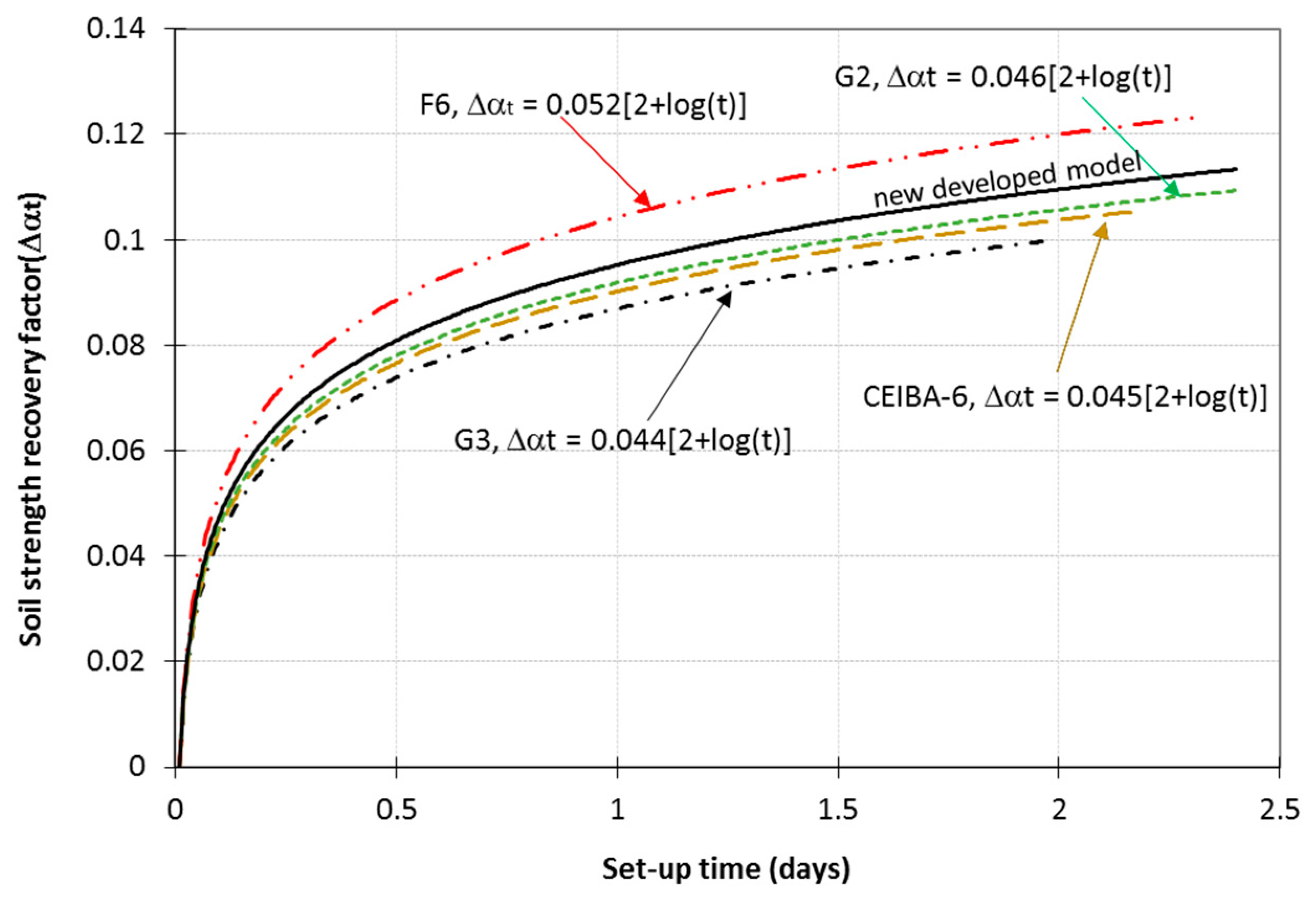


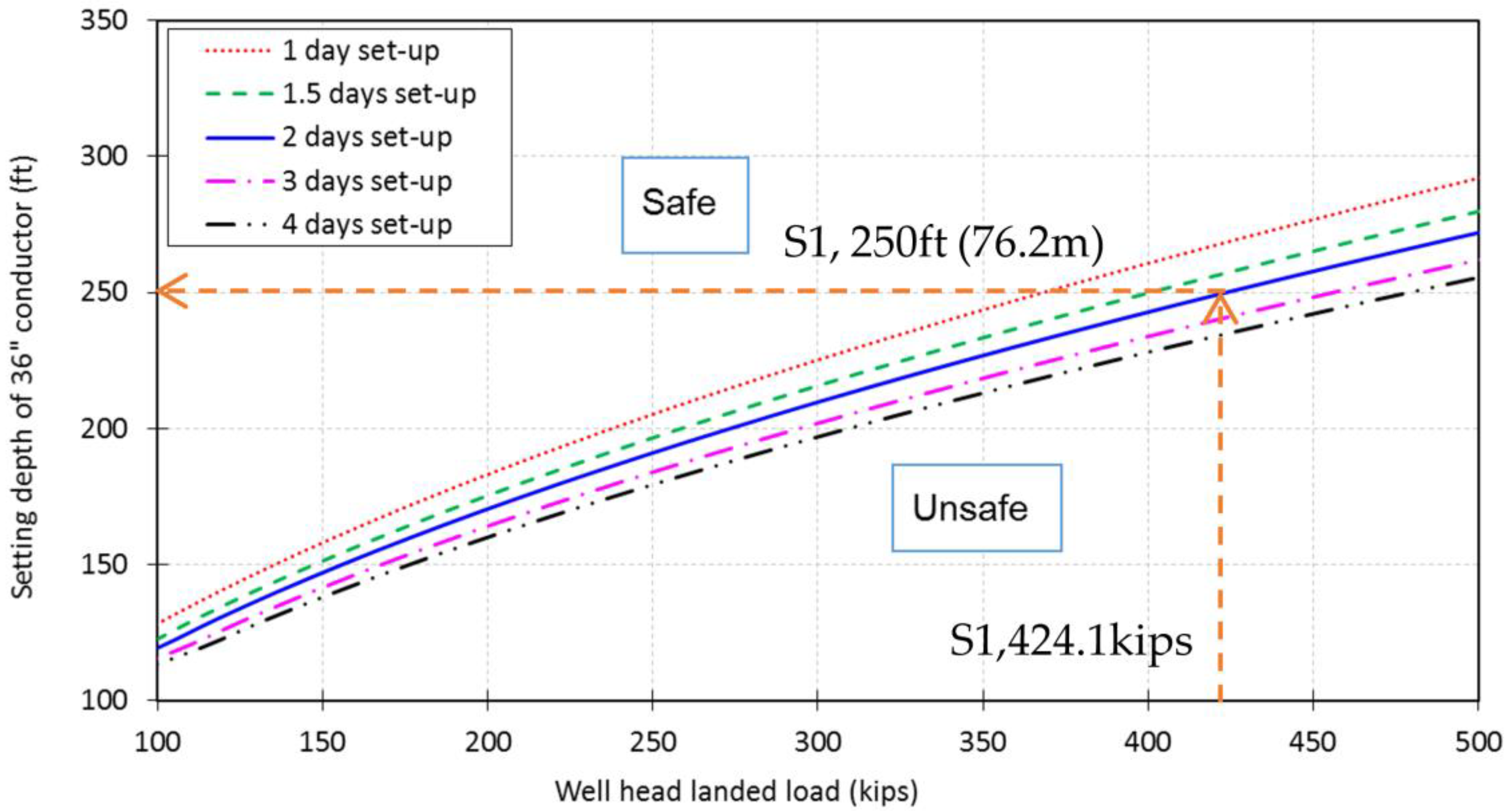
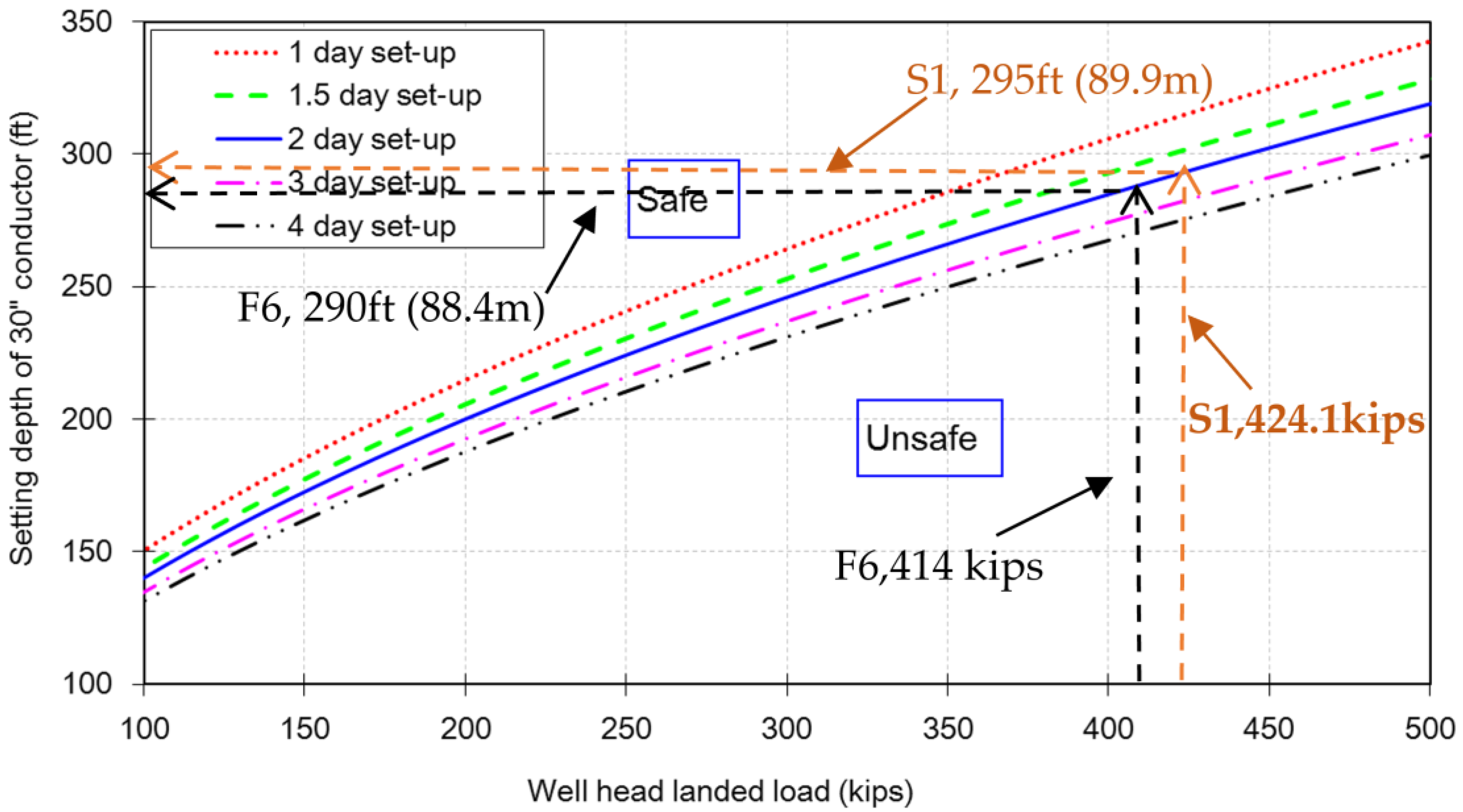
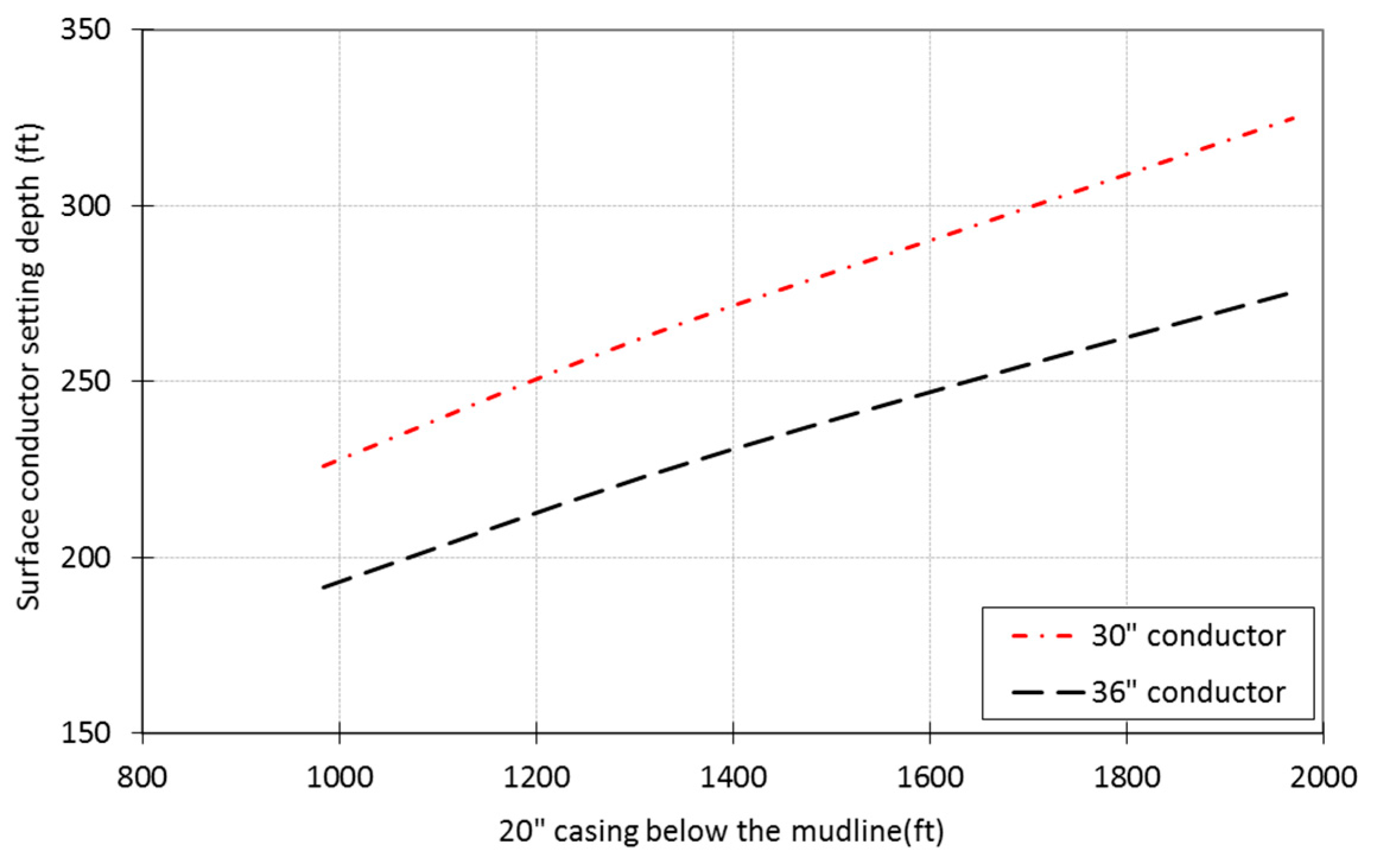
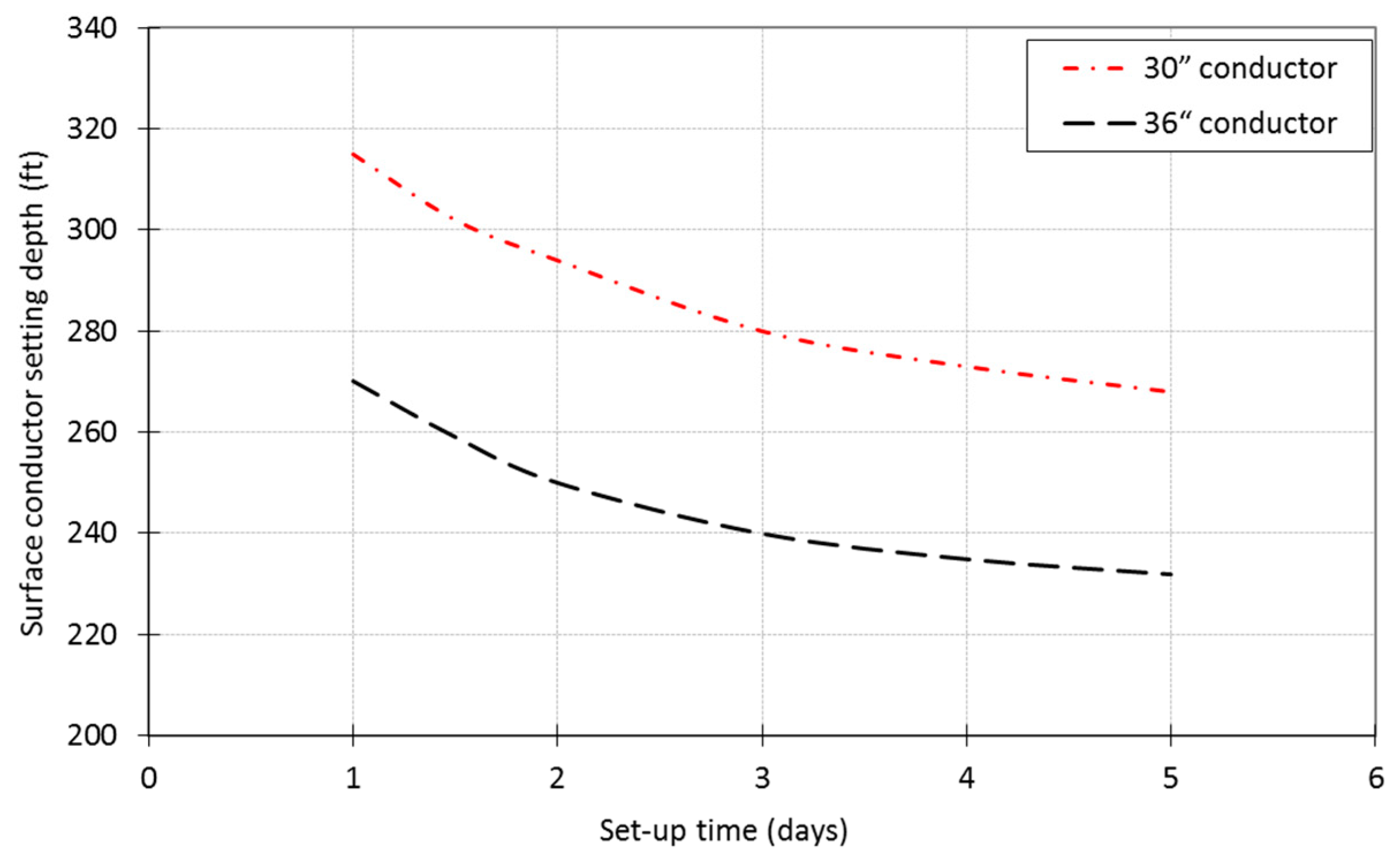
| Well | Depth of Surface Conductor (ft) | Outer Diameter of Conductor (in) | Set-Up Time (Day) | ΔQ(Kips) | Remarks | |
|---|---|---|---|---|---|---|
| G3 | 242.8 | 30 | 1.98 | 262 | 0.0998 | success |
| CEIBA-6 | 242.8 | 30 | 2.19 | 277 | 0.1055 | success |
| G2 | 242.8 | 30 | 2.4 | 287 | 0.1093 | success |
| F6 | 275.6 | 30 | 2.31 | 414 | 0.1232 | subsidence |
| No. | Item | Value |
|---|---|---|
| 1 | Weight of 20″ casing | 129.33 lbs/ft |
| 2 | Weight of 5–1/2″drillnig string | 3004.91 lb |
| 3 | Design depth of 20″ casing | 1640.4 ft |
| 4 | Liquid cement density | 11.5 ppg |
| 5 | Distance between the end of cementing string and the 20″ casing shoe | 49.2 ft |
| 6 | Sea water density | 8.8 ppg |
Publisher’s Note: MDPI stays neutral with regard to jurisdictional claims in published maps and institutional affiliations. |
© 2021 by the authors. Licensee MDPI, Basel, Switzerland. This article is an open access article distributed under the terms and conditions of the Creative Commons Attribution (CC BY) license (https://creativecommons.org/licenses/by/4.0/).
Share and Cite
Yan, W.; Kambi, S.J.; Huang, X.; Lin, H.; Liu, H.; Deng, J. Modified Model for Shallow Soil Strength Recovery Calculation during Set-Up Periods of Jetted Conductor—A Case Study of Equatorial Guinea Bay Deep-Water Drilling. Energies 2021, 14, 4940. https://doi.org/10.3390/en14164940
Yan W, Kambi SJ, Huang X, Lin H, Liu H, Deng J. Modified Model for Shallow Soil Strength Recovery Calculation during Set-Up Periods of Jetted Conductor—A Case Study of Equatorial Guinea Bay Deep-Water Drilling. Energies. 2021; 14(16):4940. https://doi.org/10.3390/en14164940
Chicago/Turabian StyleYan, Wei, Said Juma Kambi, Xin Huang, Hai Lin, Hailong Liu, and Jingen Deng. 2021. "Modified Model for Shallow Soil Strength Recovery Calculation during Set-Up Periods of Jetted Conductor—A Case Study of Equatorial Guinea Bay Deep-Water Drilling" Energies 14, no. 16: 4940. https://doi.org/10.3390/en14164940
APA StyleYan, W., Kambi, S. J., Huang, X., Lin, H., Liu, H., & Deng, J. (2021). Modified Model for Shallow Soil Strength Recovery Calculation during Set-Up Periods of Jetted Conductor—A Case Study of Equatorial Guinea Bay Deep-Water Drilling. Energies, 14(16), 4940. https://doi.org/10.3390/en14164940







